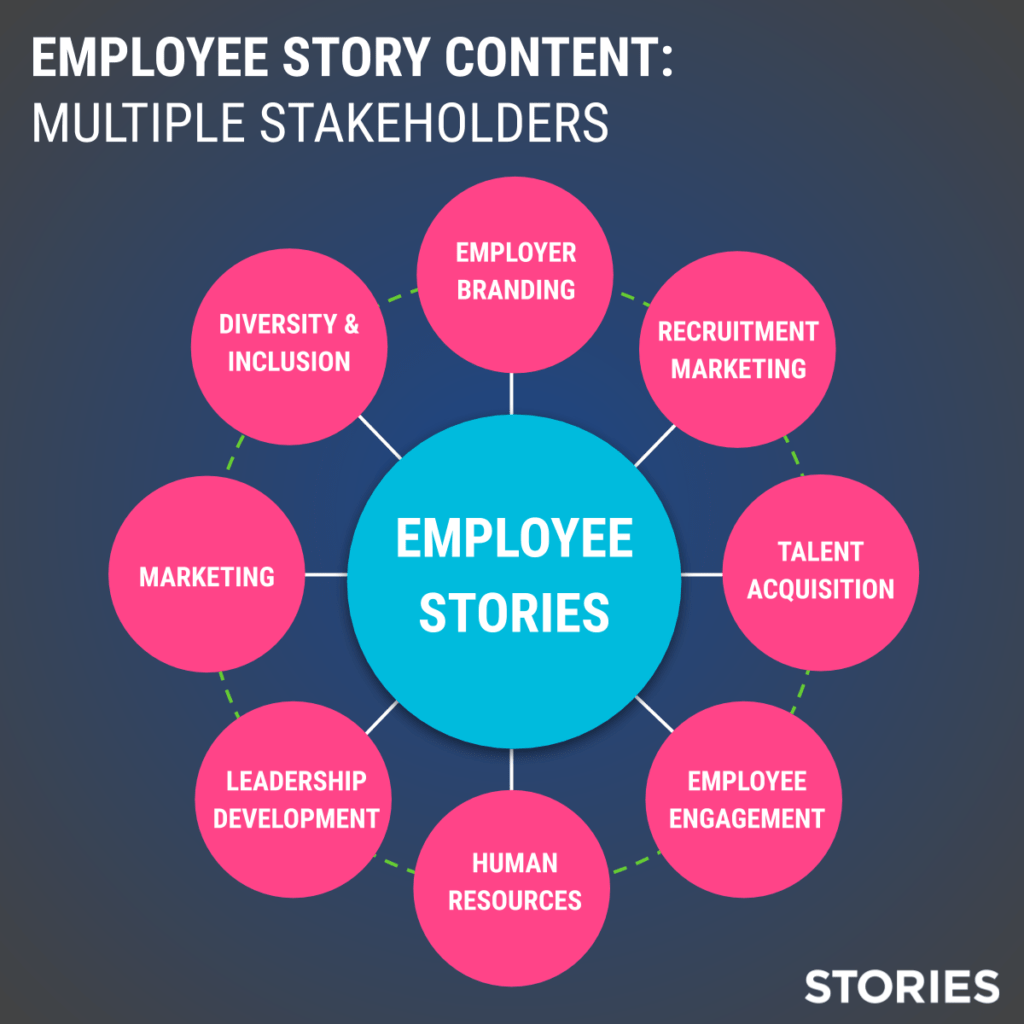6 reasons why you should use employee stories in your recruitment marketing content
Why use employee stories in your recruitment marketing content? Simple: It’s the most effective recruitment marketing content there is. Here’s why:
1. Stories give real insight.
Your audience is active and passive candidates. Give these people what they want: insight into your culture. The only way they get it is from people who are currently experiencing the workplace (your employees).
2. Stories are memorable.
Science says our brains are hardwired for stories. It’s easier for us to process cause and effect information.
Stories also inspire emotional responses. Candidates put themselves in the shoes of the storyteller, which implants a memory we haven’t experienced (working at your organization) and relating to someone they don’t know (the employee).
And, with candidates going 2-18 places before they apply, your company needs to be memorable. You need engaging content in the places candidates are searching and they need to recall you as a possible employer of (their) choice when the moment is right for them to make a move.
See if you can forget this one:
3. Stories prove you are who you say you are.
Employer brand professionals spend a lot of time researching, surveying, and listening to come up with values and employee value propositions that reflect who they are. These statements really mean something to the people who have a hand in creating them. But without the stories to back up all that hard work, it loses some of its meaning.
A value at Loews Hotels is Family. It means something to those that work there. But, because the word can mean a lot of different things, it needs employee stories to better illustrate the concept.
4. Employee stories are a content marketing secret weapon (versatile and repurpose-able).
Employee stories are a content marketing secret weapon. If you have one great story, you can switch the format, edit the length, and extend the life of your story while multiplying your content library — with minimal effort.
Dell Technologies took one great story that showed access to leadership and created several pieces of engaging content. Here’s one story three ways:
First, the story was included in a compilation video featuring multiple members of their rotational program.
Madison’s specific story was used to create a social graphic, to share the story via text on the company’s social channels.

And finally, the story was made into an animated graphic to be shared on Dell Technology’s Instagram channel:
5. Stories follow the candidate at every stage in the candidate journey.
This adds consistency to your messaging and branding, while engaging the candidate as they learn more about you (through awareness to consideration to conversion/offer acceptance). Candidates have different questions and different thoughts throughout their candidate journey, and stories can help move them along in the process.

6. Stories are closers.
Hearing a story and experiencing the visuals of a workplace without setting foot in a location allows candidates to picture themselves working there. The more clearly and more often they see themselves working at your company (or not!), the easier it is to convert them at the offer stage.
Employee stories should dominate your recruitment marketing content because they are simply the more effective medium for candidate awareness, engagement, recall, and closing (you know, everything you want to accomplish as an employer branding and recruitment marketing professional :)).

